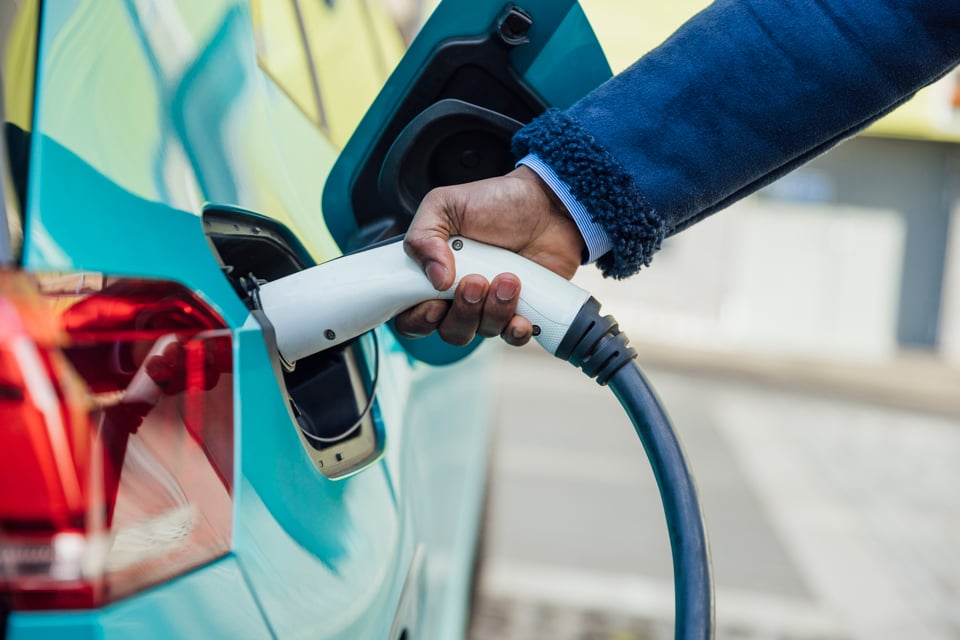New electric vehicle (EV) charge point statistics have been published by the Department for Transport (DfT) showing the number and geographical spread of devices.
In the past year, the public network has grown by 45%, with 16,622 new devices installed. It means that, as of January 1, there were 53,677 charge points available in the UK.
Some 10,118 devices were classed as 50kW or above, representing 19% of all charging devices, while 31,910 charge points had a power rating of 3-8kW, equating to 59% of the network.
Destination charging devices located at the end of a journey or where a driver may typically stop for an extended period of time are the most common location category accounting for 24,121 charging devices - 45% of all publicly available charging devices.
‘On street’ charging devices, which are located on residential streets only, account for 39% of charging devices or 20,705.
Richard Hebditch, director at Transport and Environment (T&E) UK, said: “A growth rate of charge points of around 45% in one year is a heartening achievement - and shows that it’s more than possible to meet, and even exceed, our target of 300,000 public charge points by 2030.
"But there are still big regional disparities in charge point distribution and that needs to be tackled as a priority.
"For a Government elected on a promise to level up the country, ministers clearly need to deliver the Local Electric Vehicle Infrastructure (LEVI) funding so councils, in regions like Yorkshire and the North West, can level up their provision of charging instead of relying on London to deliver the numbers.”
Regional distribution of charging devices
Across all speeds in total, there is an uneven geographical distribution of charging devices within the UK, says the DfT.
Some UK local authorities have bid for Government funding for charging devices, and others have not.
Most of the provision of this infrastructure has been market-led, with individual charging networks and other businesses (such as hotels) choosing where to install devices.
London and Scotland had the highest level of charging provision per 100,000 of population, with 210 and 84 devices per 100,000 respectively.
In comparison, the average provision in the UK was 80 per 100,000.
Northern Ireland had the lowest level of charging device provision in the UK, with 24 devices per 100,000, followed by the North West and Yorkshire and the Humber, each with 49 devices per 100,000.
When focusing on speeds of 50kW and above, Scotland had the highest rate of device provision at 21.4 50kW and above charging devices per 100,000, while the average provision in the UK was 15.1 per 100,000.
The provision of 50kW and above charging devices was lowest for Northern Ireland with 4.1 50kW and above charging devices per 100,000.
London was the second lowest region with 11.9 50kW and above charging devices per 100,000.
An interactive map of this data is available.
In the last quarter, from October to December 2023, the number of charging devices increased in all regions of the UK.
The South West had the greatest increase at 17%, whilst the North East had an increase of 3.9%.
London had the greatest increase in absolute number of devices at 1,553 devices, followed by the South West at 524.
The number of available devices can fluctuate for a range of reasons, says the DfT. Increases likely reflect the installation of new devices, whilst owners and operators can choose to temporarily or permanently decommission or replace devices.
Charging devices can also be unavailable due to faults, maintenance or other restrictions in the area where they are located, though data on the status of charging devices is not held by the DfT.
The number of 50kW and above devices also increased in every region in the UK in the last quarter.
The region with the smallest percentage increase in the number of 50kW and above devices was Yorkshire and the Humber at 2.7%.
Northern Ireland had the largest percentage increase in 50kW and above devices at 41.8%, corresponding to an increase of 23 50kW and above devices.
James Court, chief executive of driver body EVA England, welcomed the increase in charge points. “Recent stats show that EVs represented over 16% of sales last year, meaning a growing number of EVs on UK roads and, crucially, more EV drivers making use of our public charging network,” he said.
“Our most recent EVA England survey revealed 12% of EV drivers are already solely reliant on the public network to meet all of their charging needs.
“We urgently need to see charging infrastructure keep pace with increasing demand, and today's figures give EVA England confidence in the future."


























Login to comment
Comments
No comments have been made yet.